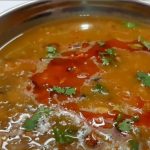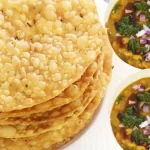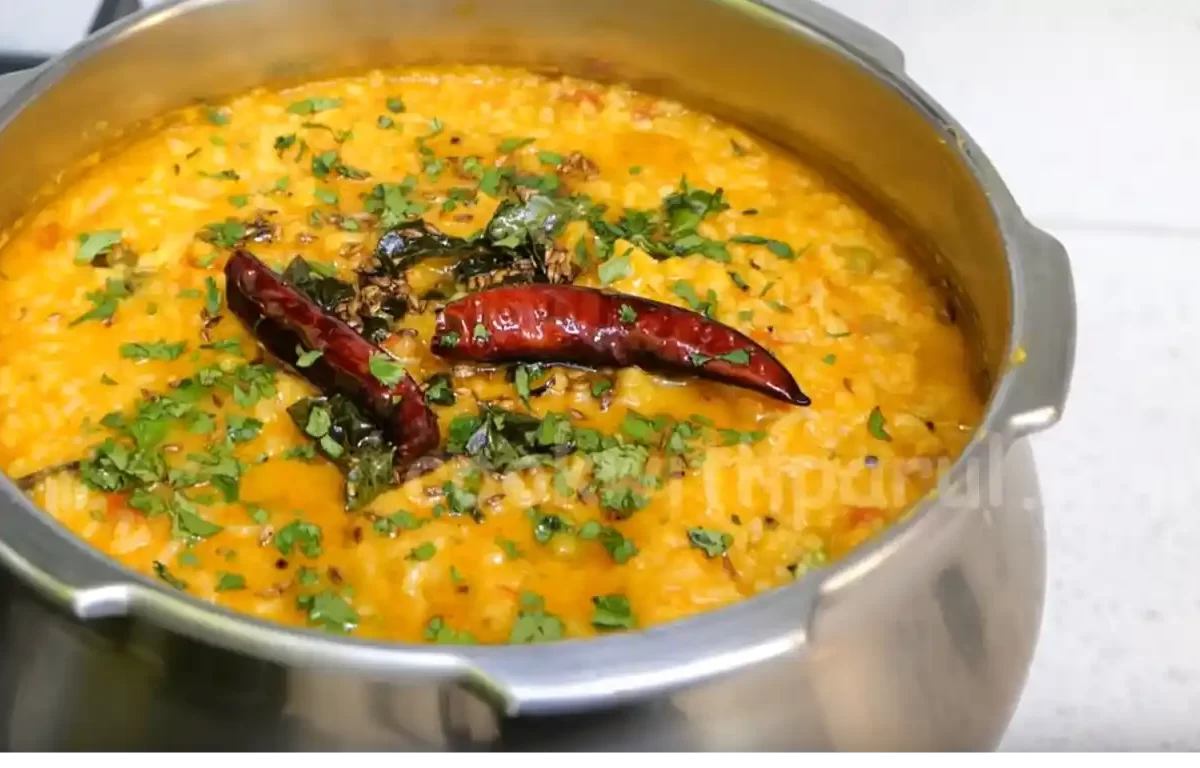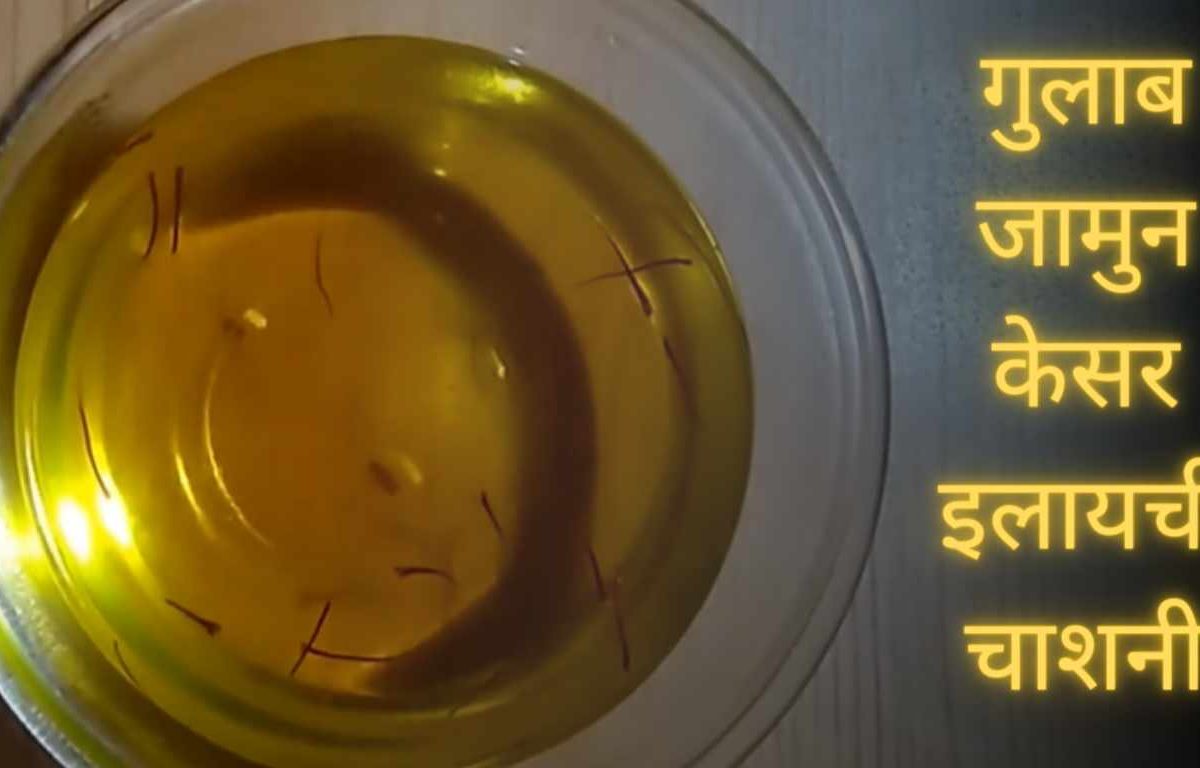Sindhi Koki
Welcome to this step by step on preparing the Authentic Sindhi Koki recipe. Popular flatbread known as Sindhi Koki comes from the Sindhi cuisine of the Indian subcontinent. It is a favorite among food enthusiasts because of its distinctive flavors and texture. This article will go into great detail about this delectable cuisine and give you step-by-step directions for making your own Sindhi Koki. So let’s get going and discover the secrets behind this delicious meal!
What is Sindhi Koki ?
Traditional Sindhi flatbread known as Sindhi Koki is made from wheat flour, onions, coriander, green chilies, and a mixture of flavorful spices. It is often prepared on a tawa (griddle) with copious ghee or oil. In Sindhi homes, the crispy and savory Koki is a standard breakfast food that is frequently eaten with yogurt, pickles, or a side of curry.
This Sindhi Koki pairs well with masala tea, pickles and yogurt.
Cooking & Serving
Preparation Time:
15 mins
Cooking Time:
20 mins
Serves:
4 People
Key Ingredients of Sindhi Tahiri
- Sindhi Koki:
- 2 cups wheat flour
- 1 medium-sized onion, finely chopped
- 2-3 green chilies, finely chopped
- 2 tablespoons fresh coriander leaves, chopped
- 1 teaspoon carom seeds (ajwain)
- 1 teaspoon cumin seeds (optional)
- 1 teaspoon red chili powder (optional)
- 1/4 teaspoon turmeric powder
- Salt to taste
- Ghee or oil for cooking

Recipe: Step-by-Step Preparation
- Step 1: Preparing Dough
- Mix wheat flour, chopped onions, green chilies, coriander leaves, carom seeds, cumin seeds (optional), red chili powder (optional), turmeric powder, and salt in a mixing bowl.
- Make sure to stir well to thoroughly mix all the ingredients.
- Add water gradually while mixing the ingredients to create a soft, malleable dough. As necessary, alter the water’s volume.
- Now divide the dough into small pieces, each of which should be rolled into a disc with a diameter of about 6-7 inches.

- Step 2: Cooking
- Grease a tawa or griddle with ghee or oil and cook over medium heat.
- The rolled Koki should be cooked for two to three minutes on each side on a hot tawa until golden brown spots form.
- After flipping the Koki, cook the opposite side in the same way.
- Repeat the procedure with the remaining dough portions after taking the pan from the heat.
- Sindhi Koki should be served hot and crispy and accompanied by yogurt, pickles, or a side of curry.
Tips for Perfect Sindhi Koki
- For a sensitive texture, make sure the dough is soft and flexible.
- For consistent cooking, roll the Koki into thin discs.
- For a classic and genuine flavor, use ghee (clarified butter); alternatively, you can use oil.
- You can adjust the amount of spice to suit your personal preferences.
- To enjoy the Koki’s best flavor and texture, serve it right away.
- Avoid black pepper and garam masala.

Sindhi Koki pairs best with
- Yogurt: Yoghurt, a cooling and revitalizing side dish, offers a creamy counterpoint to Sindhi Koki’s crunchy texture. You can serve yogurt plain or season it with a little salt and toasted cumin powder.
- Pickles: Home made mango pickle and lime pickle are two traditional pickles to serve with Sindhi Koki. The mildly spicy Koki creates a pleasant balance with the strong flavors of the pickle.
- Chutneys: A dash of freshness is added to the dish by using mint or coriander chutney. The flavors of Sindhi Koki are complemented by the herbal undertones of the chutney, which further improves the whole dining experience.
- Curry: Sindhi Koki goes well with a range of curries, such as vegetable curry or Sindhi dal. The rich and aromatic curries go well with the Koki’s soft texture to make a filling supper.
- Tea: Sindhi Koki is a delicious teatime treat. For the ideal fusion of flavors, enjoy it with a cup of hot tea or masala chai. The little spiciness and crispness of the Koki go well with the tea’s warmth.
- The side dish raita, which is made with yogurt and finely chopped veggies, gives a cool touch to the dinner. The Koki’s flavor is improved overall by the creamy raita, which counteracts the spice of the dish.
You can always experiment with several pairings to identify your own favorite. Whether you prefer a tangy pickle, cooling yogurt, or a flavorful curry, Sindhi Koki offers versatility and can be enjoyed with a range of complementary dishes.
Nutritional Benefits of Sindhi Koki
A tasty and fragrant flatbread Sindhi Koki gives not only a lovely taste but also some health advantages. Here is a rough breakdown of the nutritional elements of Sindhi Koki, while the precise nutritional value may vary depending on the precise ingredients used and the serving size:
- Due to the use of wheat flour and frying with oil or ghee, Sindhi Koki has a lot of calories. A serving of Sindhi Koki (about one piece) might add 150–200 calories to your diet on average.
- Wheat flour serves as the main source of carbohydrates in Sindhi Koki. It offers dietary fiber and energy to the body. The amount of carbs in one serving may range from 20 to 30 grams.
- Protein: The main component of Sindhi Koki, wheat flour, has a fair amount of protein. Protein is necessary for many body processes, such as tissue growth and repair. Protein content in a serving of Sindhi Koki may range from 3 to 5 grams.
- Fats: Sindhi Koki’s fat content is increased by the use of ghee or oil during the cooking process. Although fat is a concentrated source of energy, it’s still crucial to eat it in moderation. A dish of Sindhi Koki could include 5-8 grams of fat in it.
- Fiber: Since wheat flour is used to make Sindhi Koki, dietary fiber is included. Fiber helps overall digestive health, aids in digestion, and encourages fullness. One dish of Sindhi Koki contains between one and two grams of fiber.
- Minerals and vitamins: Sindhi Koki doesn’t have a lot of minerals or vitamins in it. However, it can provide trace amounts of some elements found in wheat flour, including magnesium, thiamine, and B vitamins.
It’s vital to keep in mind that the nutritional information shown above is approximations and may change depending on the Koki’s size, the precise ingredients used, and the cooking technique. Consult a nutritionist or healthcare provider for specialized assistance if you have certain dietary concerns or are adhering to a particular diet plan.
A delicious dish that perfectly encapsulates Sindhi cuisine is Sindhi Koki. Your taste buds will be satisfied by its crispy texture, aromatic spices, and distinctive flavors. You can simply make this classic recipe at home by following the detailed instructions in this article.
What are you waiting for, put on your apron, gather your ingredients, and go on a culinary adventure to enjoy Sindhi Koki’s flavors. Enjoy!
FAQs (Frequently Asked Questions)
Can I replace standard wheat flour with whole wheat flour?
You may prepare Sindhi Koki with whole wheat flour. It will give the food more health advantages and a nuttier flavor.
Do I need onions to prepare Sindhi Koki?
While onions give Sindhi Koki a distinctive flavor, you can skip them if you’d like. The meal will continue to be excellent.
Can I prepare Sindhi Koki in advance?
Fresh and hot Sindhi Koki is preferred. The dough can, however, be made ahead of time and stored in the refrigerator. For the freshest flavor, roll and cook the koki when you are ready to serve.
What are some of the most common varieties of Sindhi Koki?
Radish, spinach, or fenugreek leaves grated into the dough are some common varieties of Sindhi Koki. Additional flavors and nutritional value are provided by these additions.
Does Sindhi Koki contain no gluten?
Since wheat flour is used in its preparation, Sindhi Koki is not gluten-free.
Can leftover Sindhi Koki be frozen?
In an airtight container, you can freeze leftover Sindhi Koki. The Koki should be defrosted before being heated on a griddle or tawa until warm and crispy.








